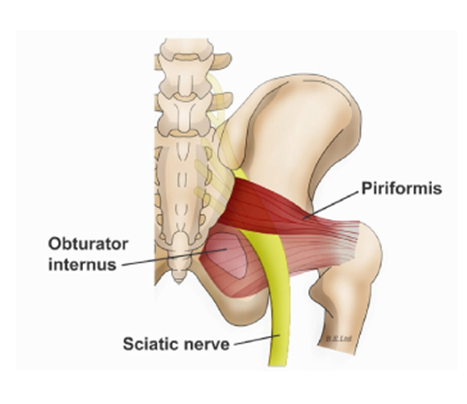| Category | Nerve Blocks |

Piriformis syndrome occurs when there is compression of the sciatic nerve or one of its branches by the contracted piriformis muscle. Piriformis is a muscle located deep in the buttock near the top of the hip joint. The irritated or injured piriformis compresses the nerve and causes pain in the buttocks and hip.
The signs and symptoms of piriformis syndrome are identical to that of sciatica or slipped disc. That’s why another name of this condition is pseudo sciatica. In reality, the person with the disease complains of sharp radiating pain from the buttocks down into the legs and foot. There will be lower back or buttock pain also
Signs and symptoms
An MRI or a CT scan helps detect nerve inflammation or rule out other conditions such as arthritis or disc slip.
Rest and avoiding pain-triggering activities are necessary.
When the symptoms persist, interventional pain management is needed. Trigger point injection is the treatment of choice. Ultrasonography of fluoroscopy is needed to increase the accuracy for best results. At times, corticosteroids are added in resistant cases.
Sometimes, few patients need Botulinum toxin of BOTOX injection, which is another very good treatment option. But, it is preferred when there is a recurrence of symptoms even after trigger point injections.
The doctor will clean the area over the region of interest and insert a small needle into the target area under imaging guidance. When it is in the correct position, they will inject the drug. They will remove the needle and cover the injection site with a small dressing.
We have very fast and competent working team (Consultant, fellow, clinical assistant, technician and ward assistant) which provide you comfortable atmosphere and ease your nerves. Usual time of stay is few hours
Every procedure carries a risk, although this is extremely small. The risk of infection with this procedure is extremely small as no incisions are made in the skin.
You can resume your work after 1 day if existing disease allows.